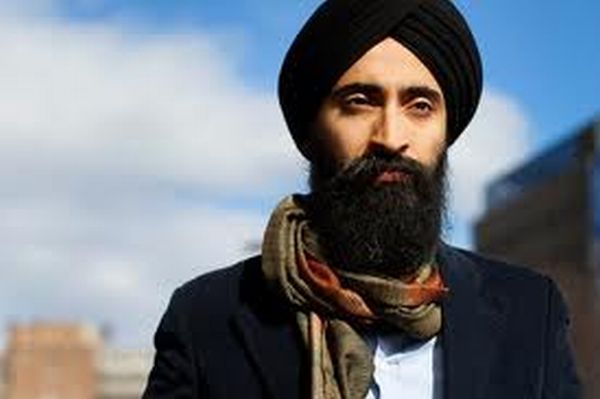Luxury Goods Forum 2010 (7 October, New Delhi) attests the emergence of India as a new international luxury shopping hub.
India today is fast becoming a new world of modern luxury. The country now teems with luxurious international brands, spurring the ascent of an Indian luxury market. One does not need to travel abroad to shop for luxury. Luxury goods and services sit aplenty right at home. Indians, however, have to realize such, be informed where to avail of them, and be convinced of the convenience and ease of access to these luxury goods and services. In the same vein, foreigners can also visit India to shop for same luxury.
India can very well be placed on the global luxury shopping map. There is, therefore, a huge opportunity to pump prime the luxury market field in India. This was the agenda of the Luxury Goods Forum 2010, organized by the Confederation of Indian Industry (CII), on 7 October at the Hotel Taj Palace in New Delhi.
The big idea behind such a move is simple, really. To make luxury a lifestyle experience, people looking out for opportunities in the luxury market need only to spoil the rich. Yes, that easy. How to do that? Make the luxury goods and services aspirational. Whet the appetite, tease the senses, fire up the craving, and watch desire translate to demand. And because the truly moneyed lot detests vulgarity, one would do well to maintain understated quality and elegance which are the hallmark concepts of sheer luxury. A confluence of all these factors will surely explode into the newfangled concept of Luxflation.
The Luxury Goods Forum 2010 thoroughly discussed India’s future as a luxury tourism hub. Talking points included the understanding of luxury market opportunities within India, strengths and opportunities for domestic and international business collaborations, new business frontiers, and the role of media in promoting India as an international luxury tourism hub.
“The Indian luxury industry in 2009 is estimated at $4.76 bn (at retail prices). This includes all luxury products, luxury services and luxury assets sold in India. The total luxury market has grown at CAGR of 13% between 2007-09, with luxury products growing at 22%, services growing at 5%, and assets growing at 18%,†proudly said Neelesh Hundekari, Principal and Head-Luxury and Lifestyle Practice A.T. Kearney India. Neelesh added that given the huge latent demand, India’s overall luxury market is estimated to grow 21% to become almost 3 times its current size by 2015.
The positive outlook was promptly confirmed by Sanjay Kapoor, Chairman of the CII Luxury Goods Forum and MD of Genesis Luxury Fashion Pvt. Ltd. “The luxury industry in India has shown promising growth over the last couple of years and is set to grow at a minimum of 25% per year over the next few years with India emerging as a luxury shopping hub,†he stated.
Further, Minister of State for Commerce and Industry Jyotiraditya Scindia highlighted the integration across the various sectors of infrastructure, brand awareness, finance, and technology. These aspects can be marshaled to spur the growth of the luxury sector in the country. The desired end is to educate the local and international shopping crowds that India is not only a market for luxury goods but also a viable and reliable source of luxury production. Scindia succinctly stated, “It’s not only international luxury brands that have a lot to offer to India, but India also has a lot to offer to the world.â€
There is a clear strategy to stimulate luxury consumption in the domestic front. The key driver for the growth of the luxury sector is to unlock the demand among high income brackets, with the lowest income level at upwards of Rs10 lacs. Today, there are approximately 126,000 HNIs (High Networth Individuals) and another 3 million households earning above 10 lacs. With this spending potential, Indians undoubtedly are ready to experience luxury. The challenge now is to feed this potential demand.
Brand Awareness
Ram Iyer, COO of The Collective, asserted that “The brand portfolio has to be driven by three factors: price value, brand value and design value.†The question lies in the healthy proportion of these three values in building a brand. The challenge definitely lies in the owner of the brand who does the customization of the brand, as well as creates and promotes it. The owner’s good judgment on the matter will eventually translate to revenues.
Radha Chadha, author and brand consultant gave a piece of timely advice: “I believe customization is good if not done at the cost of the DNA of the brand.†At the end of the day, quality is the level playing field among luxury goods and services. No matter how you design or price it, you’re likely to be kicked out of the luxury market competition if you do not have a quality brand.
In luxury markets, quality is painfully the name of the game. The luxury consumer is willing to spend more only because there is higher quality to be had in that particular product or service. Quality has its price, so they say. And quality equals luxury.
Real vs. Virtual Sales
So, how does one promote luxury goods and services in India – online or on site? The Chairman of the CII Luxury Goods Forum, Sanjay Kapoor, firmly believes that it’s the first-hand touch and feel of the product that gives confidence to the prospective buyer to splurge considerably more money to possess luxury.
To this, the forum attendees voted for the retail (real) promotion and sale of luxury products as a more viable and wiser business strategy. Quite logically, one who wishes to splurge on a luxury item will need to inspect the goods at close look. It’s not cultural, just commonsensical.
Italy adores India
Armando Branchini, executive director, Fondazione Altagamma (a body of luxury brands of Italy) expressed: “In coming months, you can expect number of Italian investing, expanding and strengthening their presence in India. Altagamma, which has 70 members, expect the total number of single brand stores of Italian firms in India to touch 200 by 2020 from 30 at present. The 30 single brand stores of Italian brands that are already present in India is too less as compared to China, which has about 400 stores.â€
When asked about the slow entry of Italian brands to India, Branchini said: “the process has been slow due to policies and also lack of appropriate retail space.â€
Identifying the Luxury Customer
Also at the forum, Jayant Kochar, MD of Go Fish Retail Solutions, Former MD of Lacoste India, and Founder of Barista Coffee, raised pertinent and interesting questions in an effort to identify the profile of Indian consumers. He also raised the opening up of market possibilities beyond such big business vectors as Mumbai and Bangalore. He likewise raised the reasons why luxury brands should collaborate with partnerships across India.
Other forum members came up with answers to the thought-provoking queries by Kochar, as well as ideas on the challenges posed. Shubhranshu Pani, MD-Retail for Jones Lang La Salle, offered a general profile of the Indian consumer and a way to fulfill his needs: “Today’s luxury customer is first a rational buyer. So, we have to create a need for a product before reaching them.â€
Collaboration among players in the luxury field was next seen as a possible strategy, though the actual feasibility of the collaborative tactic is empirically doubtful. Sonica Malhotra, director at the MBD Group, claimed, “Collaboration between the hospitality and retail verticals is happening. Hoteliers are already creating space for brands.†To this, however, Pani hesitated to confirm because the mindset of hoteliers is said to be such that they want more space for hospitality and less for luxury.
The Role of Media
The forum concluded with media moguls expressing the role of media in helping create the desire for luxury goods, as well as educating the Indian customer on international luxury brands and their core values.
Santosh Desai, MD & CEO of Future Brands, stated that Indians have been known for earning money but having difficulty in choosing what to buy. Herein lies the role of media.
However, developing the relationship between a luxury brand and media is a rather tricky effort. “Brands first need to understand the customer psychology to establish them and then reach media to grow. Throwing themselves upon the face of customers won’t generate results,†stated Feroze Gujral, fashion consultant and columnist for Vogue, who was billed as the only luxury consumer in the forum panel.
India as a Luxury Tourism Hub
Nakul Anand, chairman of the CII National Committee on Tourism and division chief executive of ITC India Ltd.–Hotels Division, warmly said, “We, Indians, are known for receiving our guests as our god.†This cultural mindset, plus India’s wealth of people and products, will surely make the country deliver quality goods and services. India does not have a shortage of quality producers.
Add to this the cultural pride of good service and utmost hospitality, and the country has a great potential towards becoming an international luxury tourism hub.
Message to Sanjay Kapoor: The second edition of the Luxury Goods Forum held on 7 October in New Delhi was so productive that this definitely calls for an annual event.




